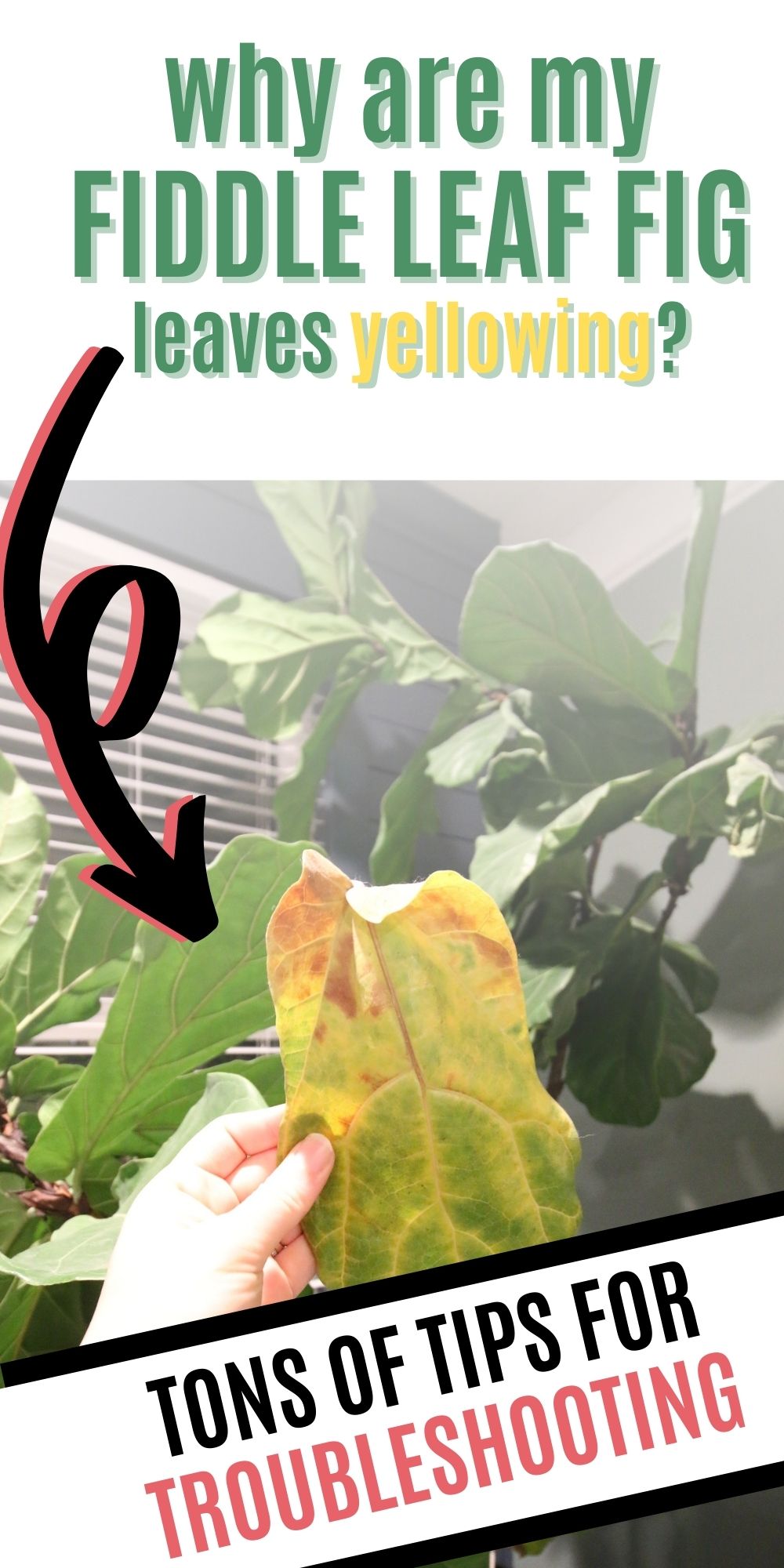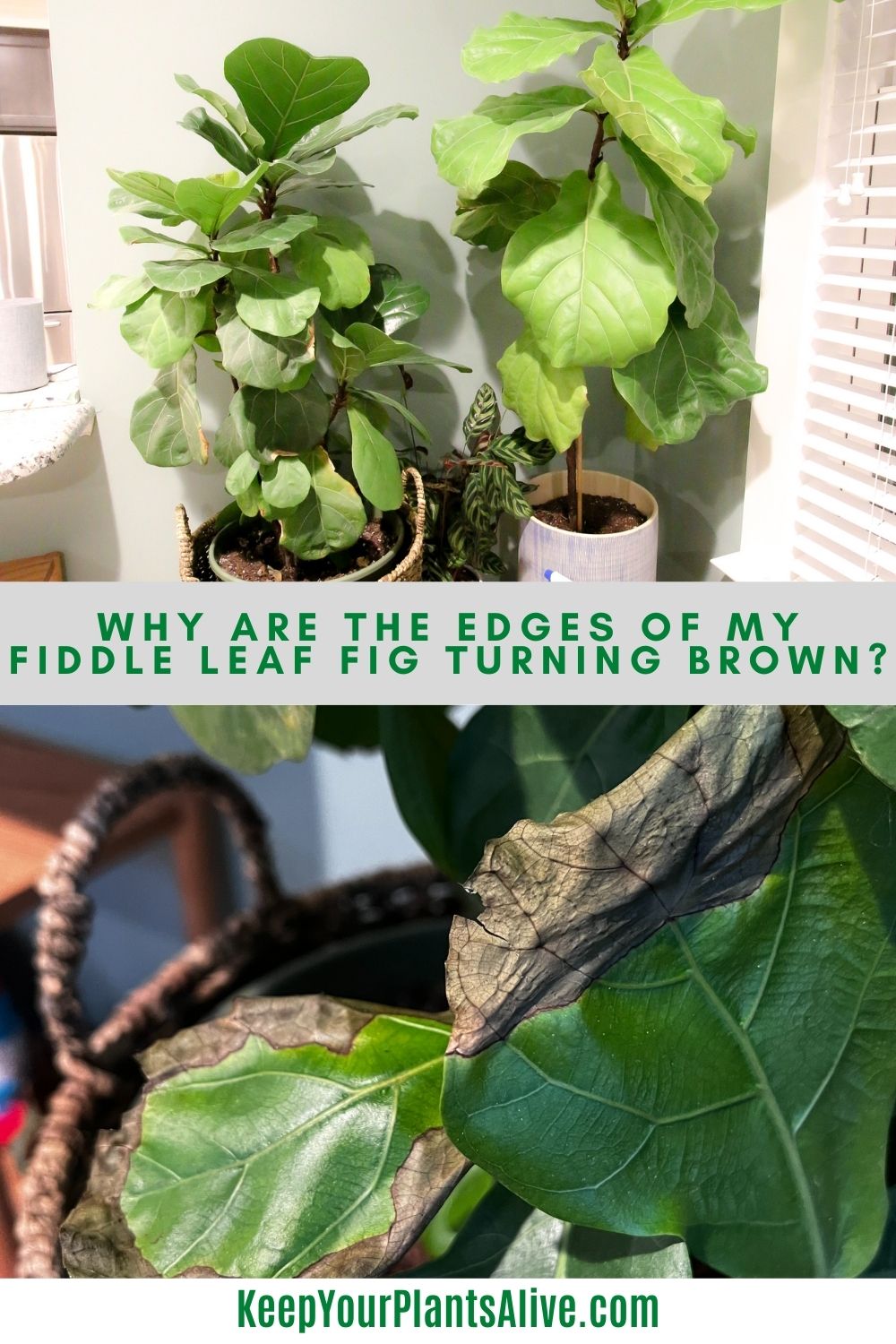Want to prune your fiddle leaf fig houseplant? Here is where to cut a fiddle leaf fig to get the best possible results!
I simply love fiddle leaf fig plants. I know I know in a lot of circles they are considered "so 10 years ago". However, I love their large tropical leaves, and the way that their vertical height can really add interest to a room.
But I don't love about Fiddle leaf figs is that they can be very finicky.
Honestly, you can have one that is happy for years and not even move it and all of a sudden it's just dropping leaves left and right.
It can be pretty stressful for a plant owner to deal with.
Whether your Fiddle leaf fig is so healthy that it is outgrowing your home or if you think that your plant is struggling and could use a little boost, chopping your family fig can be a great way to give it a new life.
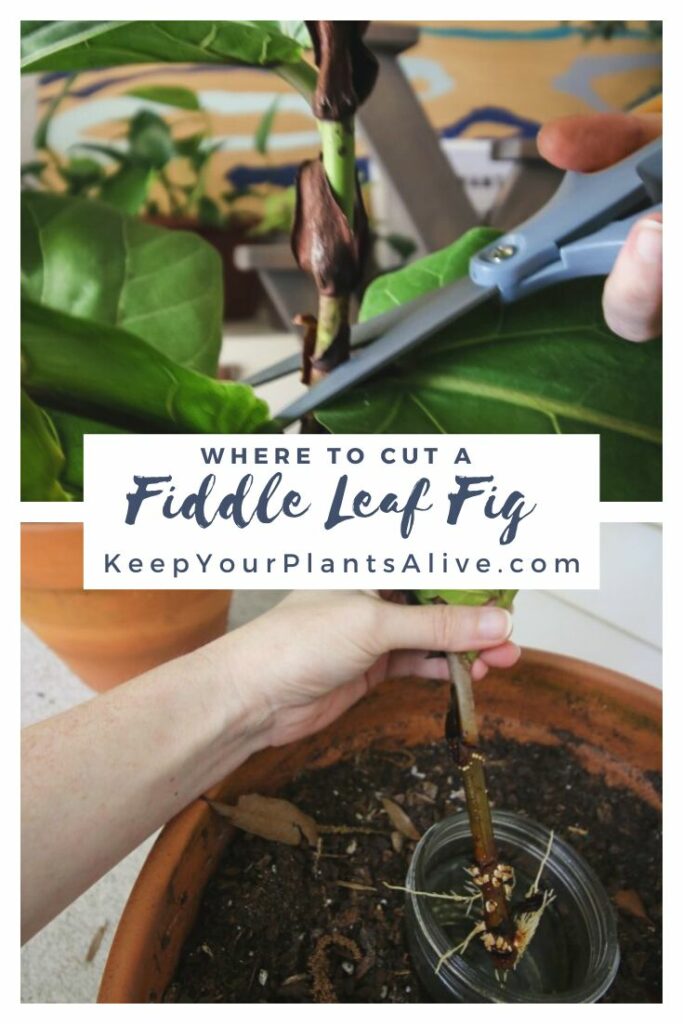
Chopping your fiddle leaf fig
Here's the process that I use to decide where and when to chop my fiddle leaf fig!
Assessing Your Fiddle Leaf Fig
Once you decide to chop your fiddle leaf fig, try to understand the growth pattern of your plant before you start pruning it.
Take a look at the plant and see if it is growing one long stem or many branches, and if the leaves are close together or far apart.
Look for areas that might be over crowded, leggy growth (large areas of stem without any leaves), or damaged leaves that need attention.
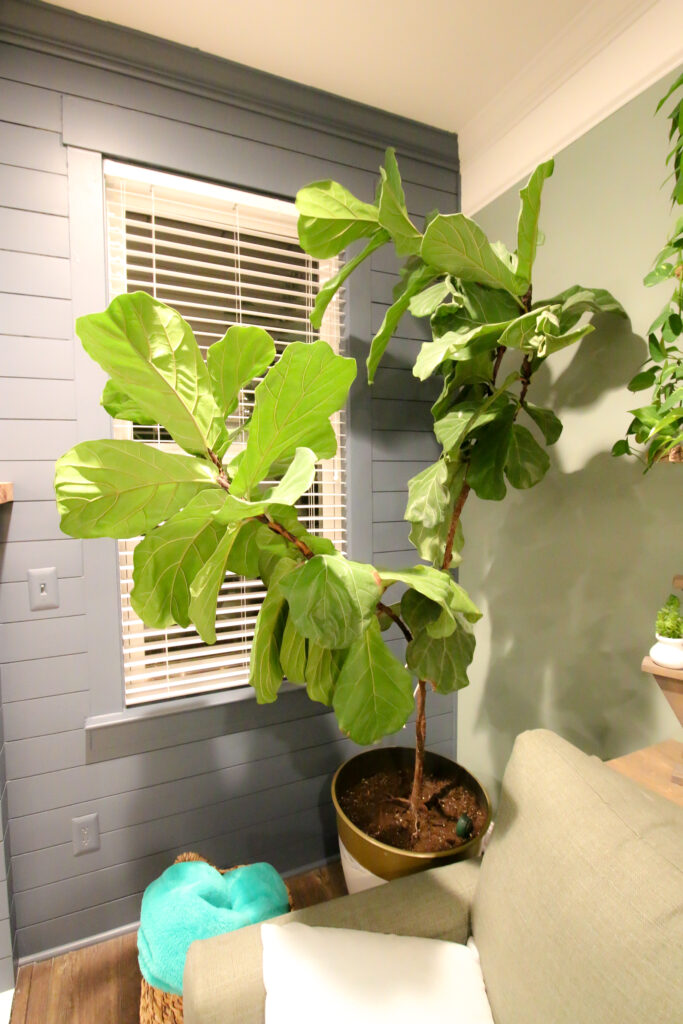
Types of Cuts
There are two primary types of cuts: strategic pruning and maintenance pruning.
Strategic pruning shapes the plant's overall structure, while maintenance pruning focuses on individual leaves and stems.
Choosing the Right Tools
I recommend tools such as sharp pruning shears and gloves for protection - the sap can be vicious once you cut your plant.
It is important to use clean and sharp tools to prevent damage and disease.
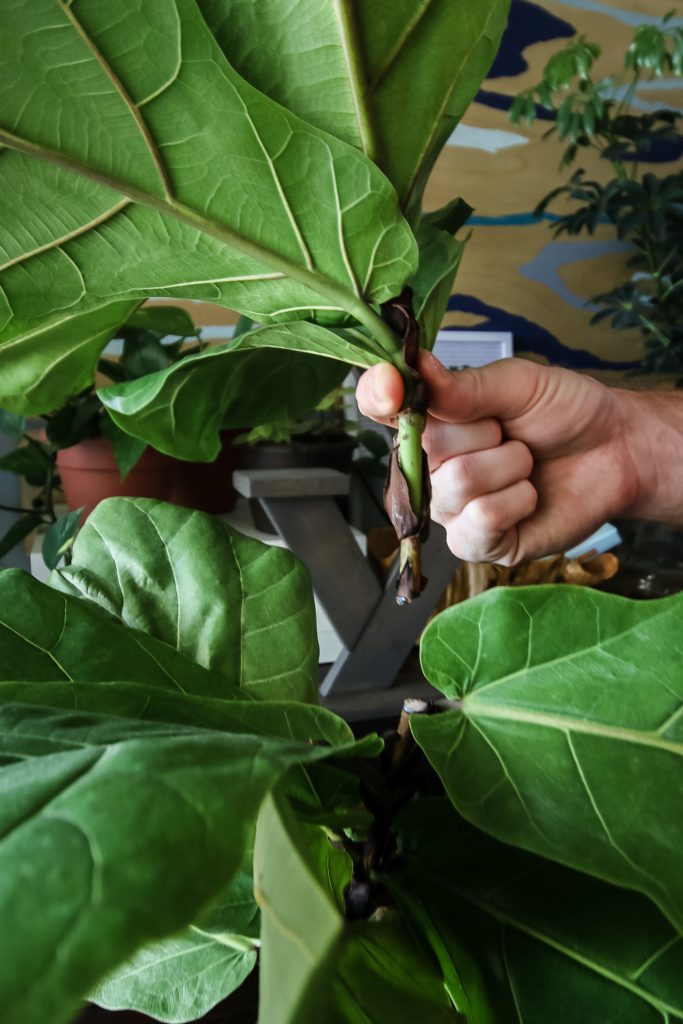
Strategic Pruning: Shaping Your Fiddle Leaf Fig
Strategic pruning is more major pruning that will help to re-shape your tree. I never suggest cutting off more than ⅓ of your plant at a time.
Promoting Height and Branching
Identify the main stem and make a clean cut just above a node to encourage branching.
This cut redirects growth, leads to branching, and prevents a single, tall stem, which can get lopsided and have trouble standing upright.
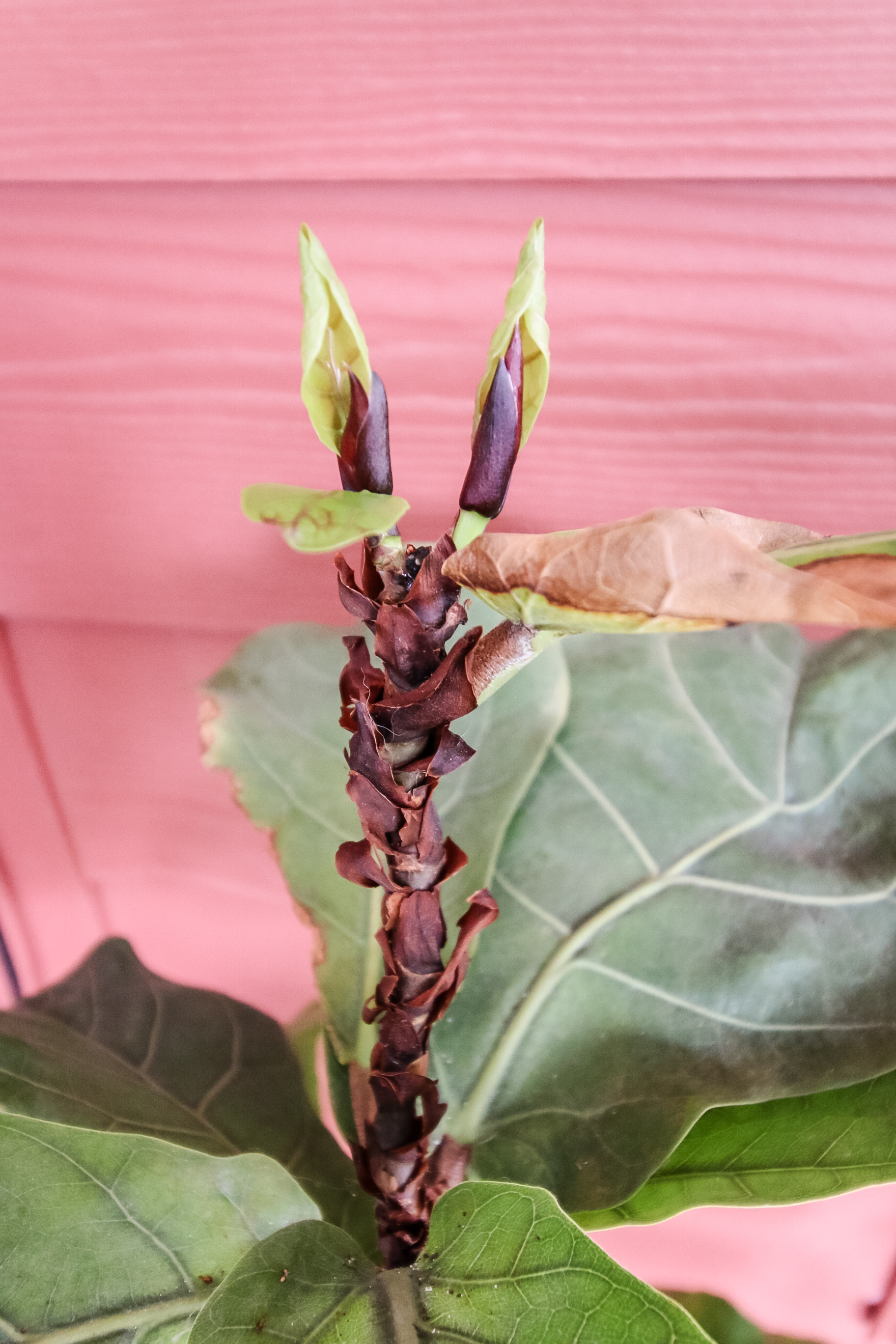
Encouraging Fullness
Trim back leggy growth by cutting just above a leaf node. It is very important to choose a healthy node for optimal regrowth. Dead branches wont' grow back because you trim them!
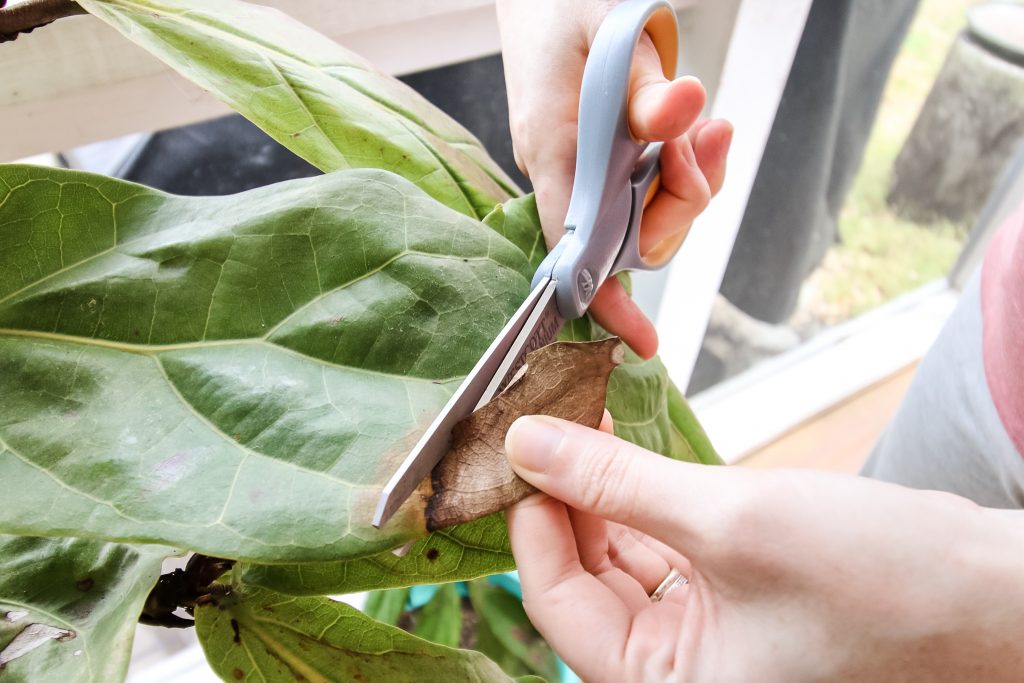
Maintenance Pruning: Enhancing Leaf Health
Maintenance pruning is more minor removal of damaged areas of the plant.
Removing Yellow or Damaged Leaves
Locate yellow or damaged leaves and cut them off near the base of the plant.
Cutting dead leaves promotes energy allocation to healthier growth.
Dealing with Brown Tips
If a leaf is more than ⅓ brown and dead, I cut it off my plant.
If it just has brown tips or edges, you can use scissors to gently trim that part off.
Adjust watering and humidity to prevent further browning.

Propagation Potential
If you have cut a healthy segment off of your Fiddle leaf fig plant, you should propagate it.
Dip it in rooting hormone and stick it in either water or moist soil until it grows roots.
I also encourage loosely covering it with a clear plastic bag, to create a greenhouse effect. I have a much higher success rooting my fiddle leaf fig cuttings in a high humidity environment such as this.
If you have cut off a dead or unhealthy section of your plant, don't bother rooting it it will not propagate nicely.
Also, it is worth noting that you cannot propagate a fiddle leaf fig from just a leaf – you need a piece of stem with a node on it to grow root.
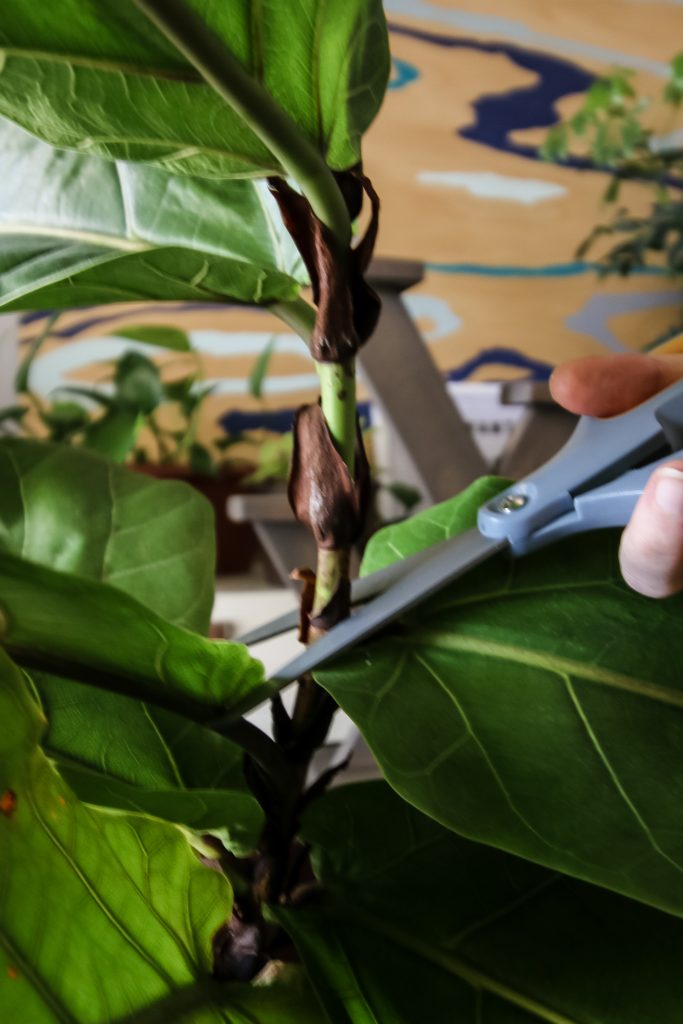
Aftercare: Supporting Recovery and Growth
After cutting, your plant is recovering from a traumatic event. Here are some tips to help it recover.
Pruning Wound Care
Some people treat pruning wounds with a natural healing agent or cinnamon powder.
I personally prefer to let them be, but monitor them for any signs that something has gone wrong.
Additionally, remember that they will put out a lot of very sticky sap at this time. Keep away from pets, kids, or anything that might rub against it.
Ideal Conditions Post-Pruning
Remember to provide consistent care, including appropriate light, humidity, and water, to aid in recovery.
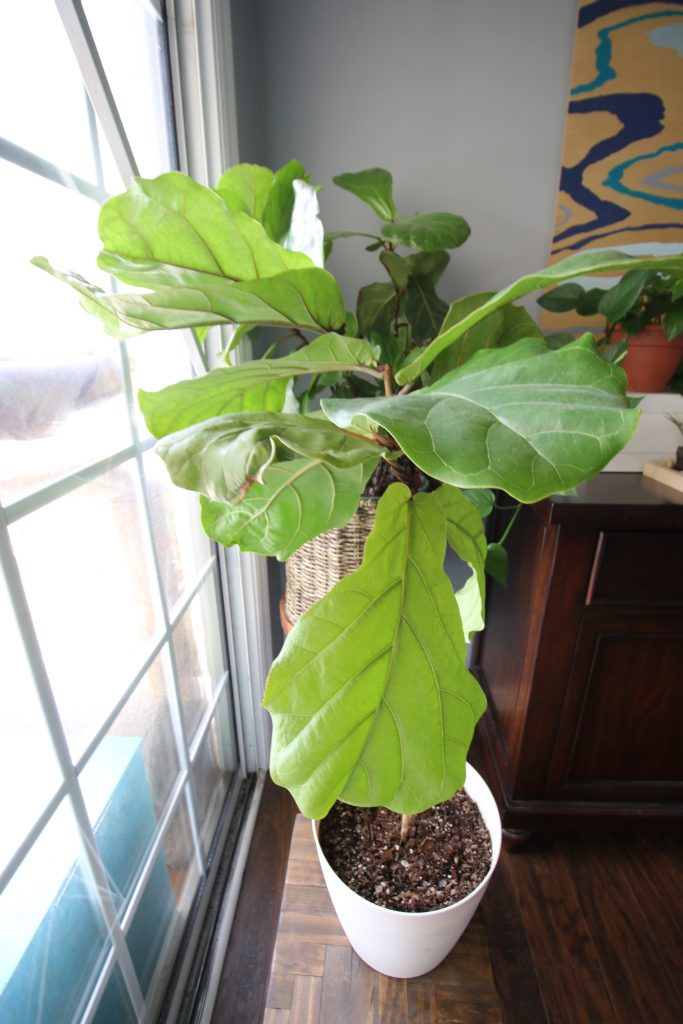
Patience and Observing Progress
It is important to be patient. It will take a while for your plant to recover and new growth to emerge. It could take as much as two months to see any sort of growth around an area where you were hoping for new branches.
It's important to monitor your Fiddle leaf figs response to pruning over the coming weeks and make sure it does not go into distress.
Armed with the knowledge of where and how to make cuts, you'll be able to shape and maintain your fiddle leaf fig with confidence.
Any more questions about pruning your fiddle leaf fig?
Thanks for reading!


Hey there, I'm Morgan, a houseplant enthusiast from sunny Charleston, South Carolina. Growing up surrounded by my mom's lush orchids and African violets, I discovered the magic of bringing nature indoors. Thanks to the pandemic, I delved deeper into houseplants, discovering their power to uplift moods and transform spaces. I'm here to spill all my secrets, helping you pick the perfect houseplant - and make it happy. Let's keep your plants alive, together! 😊


